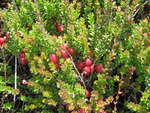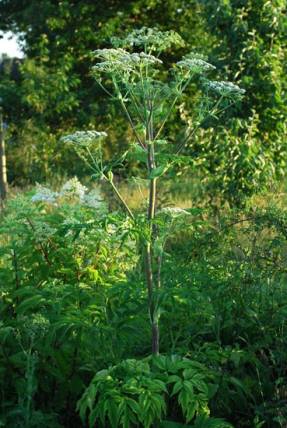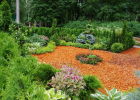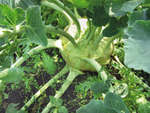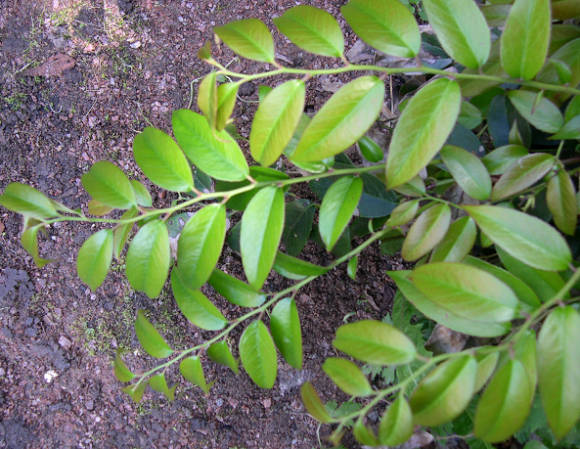 Currently, despite the landscape boom, flower beds occupy relatively little space in the landscaping of private plots. That is, the flowers on the site, of course, grow, but the correct organization of plantings in space, as a rule, is absent. Many people know what a rabatka, arabesque, a flower bed are, but for some reason they are in no hurry to embody them on their plots.
Currently, despite the landscape boom, flower beds occupy relatively little space in the landscaping of private plots. That is, the flowers on the site, of course, grow, but the correct organization of plantings in space, as a rule, is absent. Many people know what a rabatka, arabesque, a flower bed are, but for some reason they are in no hurry to embody them on their plots.
The traditional idea that arranging and caring for flower beds is very difficult and requires a lot of time and effort is not entirely true. Of course, certain knowledge is needed, but among flower crops there are difficult to grow, and there are also unpretentious ones, quite accessible even to not too skillful gardeners. Mostly such flowers should form the basis of a flower garden.
In order not to get frustrated with your creation, you need to familiarize yourself with the biological characteristics of the plants that you intend to use. The most important information: attitude to light and moisture, lifespan, flowering time and retention of green parts of the plant (growing season), maximum size in adult state, compatibility with other plants, growth rate.
In any case, plants are selected for the flower garden with approximately the same requirements for soil conditions, moisture and lighting conditions. Fast growing plants should not be planted next to slow growing plants. In general, try to avoid the use of aggressive plants, especially in relatively small flower gardens, prefer crops with a moderate growth rate.
Plant selection principle
For those who have firmly decided to set up a flower garden on their own, it is necessary to formulate the basic principle of plant selection from the beginning: will it be a “garden of continuous flowering”, a flower garden of a certain color range, a collection of varieties of one or several crops. Most likely, there will be a place on the site for a beautiful border along the path, and for a flower bed in front of the house, and for a mixborder at a distant gazebo, and for a collection site.
The choice is great and depends entirely on the wishes of the owner of the garden. But one way or another, even before you start creating a flower garden, you will inevitably face the need to solve a number of problems. What will be the color scheme of the flower garden, its shape and volume? How will the picture of the flower garden change during the season? What plants will be included in the flower garden? In other words, it is necessary to select an assortment of plants for the flower garden with the given parameters and, depending on the occupied area, calculate the required number of plants.
Flower garden organization rules
The rules for organizing a flower garden with certain knowledge will not seem complicated. Tall plants are planted in the background, lower ones in the foreground. A good flower garden should have at least three conventional rows and three levels. The tallest and largest plants are planted in two unequal groups along the diagonal of the flower garden at its opposite edges. The remaining free space in the foreground is filled with undersized or ground cover plants, in the background - taller ones, forming the background. Early spring perennials are planted so that in summer they are not visible behind other, later growing, flowers. In place of faded bulbs, you can plant seedlings of summer plants.
Number of plants
Sometimes it is difficult to calculate the number of plants necessary and sufficient to fill the space allocated for the flower garden. With some exceptions, you can rely on the following data. For 1 m2, 1-3 large and tall plants are enough, 5-7 are medium-sized and compact, 7-11 are undersized, and 30-35 plants can be planted per 1 m2.To make the flower garden look natural, it is customary to plant an odd number of plants in one group and preferably asymmetrically, of course, if this is not a regular flower bed, but the plants are also placed in it in a checkerboard pattern. Smooth rows or circles should not be visible. Plants are planted at such a distance from each other that there is room for them to grow.
Plan on paper
Lack of experience in planting flower beds is not a problem, try to develop it on paper first. To do this, transfer the size of the flower garden at a scale of 1:10 or 1: 5 to a sheet of graph paper, outline the boundaries of a particular culture, paint areas of the corresponding plants with colored pencils, make corrections if necessary. Calculate the required amount of planting material. You may have to draw several options and choose the most interesting one, which will be implemented.
Layout of a flower garden on the ground

The breakdown of a flower garden on the ground begins with the designation of its boundaries. To do this, pegs are hammered along the contour of the flower garden, and a cord is pulled over them, the sod inside the contour is removed, the remaining roots are selected. The soil is dug up by about 30 cm, large clods are crushed.
If the soil is heavy clay, compost or good humus, sand, peat, a little ash or bone meal are added to it; if the soil is sandy or sandy loam, it is necessary to add peat, compost and, if necessary, loam. An earthen cushion is formed from the soil mixture, which rises 10 cm above the sod level (a kind of bed). The soil mixture is leveled and compacted.
After the soil cushion is formed, they proceed to the breakdown of the actual plantings. A sharp peg on the surface of the flower garden marks the boundaries of the placement of a particular culture, the transitions between which should be smooth.
Old plants should not be transplanted to a new location with a large bush. Such plants take root worse, get knocked out of the general curtain of the flower garden and, therefore, lose their decorative effect.
Boundaries
 |
Royal garden Windsor |
Well-marked, even accentuated borders give a neat, finished look to the flower garden. For this, a variety of techniques and materials can be used. Traditionally, medium-sized natural stones are laid out along the edge, low stone, ceramic, wooden or plastic borders or simply plastic ribbons specially designed for flower beds are displayed. Dumping along the edge of a narrow strip of colored sand or gravel looks good (river or small sea pebbles look better, crushed limestone or granite looks worse). If there is neither one nor the other, you can simply trim the edges of the sod evenly - this is the simple method used in the Royal Gardens of Windsor.
(Based on the materials of the magazine "Stylish Garden", No. 12/1, 2004/2005)

